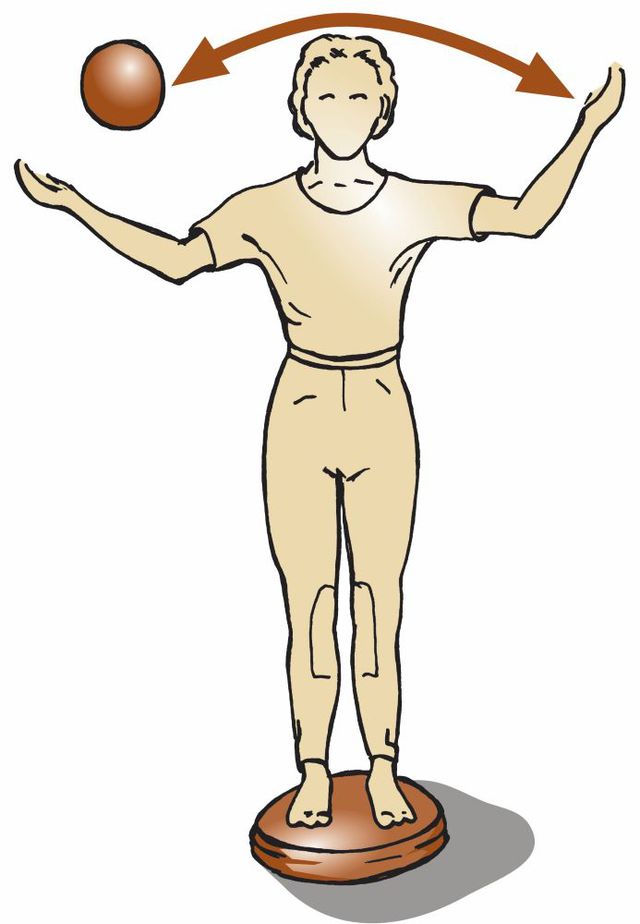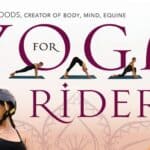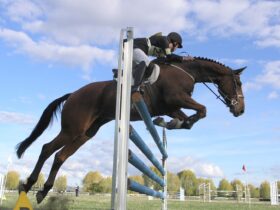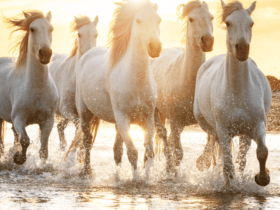How Can Half of Anything Make the Whole Difference?
—Extract from Rider + Horse = 1

In this extract from Rider + Horse = 1, leading expert in movement and riding, Eckart Meyners, is joined by Hannes Müller and Kerstin Niemann in explaining how half of anything can make the whole difference.
It is always a risky undertaking to try to describe “feel.” Just as it is impossible to dispute matters of taste, each rider would probably describe her riding “feel” a bit differently when she applies a half-halt. An attempt to describe the feel could be something like this: The horse determines the right moment, which is when all the horse’s joints are flexing during movement. This is when the rider “gathers” the horse’s impulsion into a slightly more closed body frame (shape).
To explain further, the horse flexes his large joints from the hip through the stifle to the hock, and farther on down. Thus, his pelvis is tilted, his croup lowers, and his muscles cause his back to arch slightly upward.
As a prerequisite, the rider needs to be very supple on the horse’s back since her pelvis must “receive” the movement of the horse’s arching back and follow it, meaning she slightly tilts backward and her pelvis gets “sucked” into the horse’s back movement. As a result, she will feel how her lower leg softly and automatically “clings” to the horse’s body, since her backward-tilted pelvis initiates the driving impulse in her lower leg. At the same time, her hands follow the movement of her pelvis.
During the moment of suspension in the horse’s trot or canter, the rider’s pelvis tilts slightly forward again, and as a result, her lower leg somewhat disconnects from the horse’s body and her hands move slightly and elastically forward. This is the moment when the rider “lets the horse’s forward impulsion out.” When the horse’s hooves make contact with the ground and the joints flex once more, the rider can utilize the next half-halt in the rhythm that is predetermined by the horse. This way, the rider can influence the horse with many consecutive half-halts that accompany the horse’s every movement—sometimes more, sometimes less pronounced.
The functional principle is similar to a perpetual motion machine, since all the horse’s movements, whether at the walk, trot, or canter, give the rider the recurring opportunity to use the half-halt technique to influence the horse.

Since describing how and to what extent half-halts are applied is so complex, consider this thought: “The horse ‘collects’ the half-halt from the rider.” This means that through the rhythm and sequence of his movement, the horse determines how and to what extent the rider applies the half-halt; however, this should not mean that the half-halt is ridden in a reactive manner: Being able to actively utilize the half-halt requires a great deal of coordination on the part of the rider.
The following example is a fitting comparison: Take a ball and keep bouncing it on the floor with one hand. When the ball jumps up toward your hand, you first receive the ball’s movement, meaning you act reactively. Then, however, you can influence the ball’s direction and dynamics by lifting and lowering your wrist. You are, therefore using your own activity to bring energy into the “conversation” between a human hand and the ball.
Just like when bouncing a ball, the rider must use her proprioception and skills in order to find the correct moment for the half-halt. Those who have developed proprioception during their riding education can “feel” the point in time when they must collect the horse’s impulsion, retain it, then with a yielding rein aid, immediately allow the horse to swing forward.
Coordination of Aids
The rider must be prepared to coordinate her aids during the half-halt, a big test of her riding skills and coordination. But she cannot learn this simply by “being moved” passively (“reacting” rather than “acting”) on a schoolmaster. Furthermore, since there are no comparable skills that a rider can fall back on that would allow her to transfer the skill to riding, this transfer must occur by using a rider’s various abilities.
Just as it is part of training for other sports, the rider should be able to fulfill intricate, complex tasks, which must occur simultaneously, consecutively, and under time pressure. As a consequence the rider becomes more sensitive to her coordination abilities. She can then act and react during situational changes without any difficulty.
Cross-coordination exercises turning around the rider’s longitudinal axis provide the best preparation since they involve using both sides of the body via the brain…these exercises assist with the interplay of aids—especially across the diagonals of your body.


Suggested Exercises
These exercises can help the rider increasingly become better able to fine-tune her aids and her influence while applying the half-halt.
- Walking and circling one arm.
- Walking and circling both arms consecutively—like a windmill—from front to back, and vice versa.
- Walking and circling both arms at the same time from front to back, and vice versa.
- Skipping and circling both arms from back to front, and vice versa.
- Stand on balance trainer on both legs and throw a ball from left hand to right hand.
- Stand on balance trainer on one leg and throw a ball up in the air.
The goal is for the rider to not only reactively experience the half-halt, but to be able to actively use it in order to change the horse’s gait, movement, and posture. Nowhere does the conversation between rider and horse become more clearly apparent than in the skillful application of half-halts.
This extract from Rider + Horse = 1 by Eckart Meyners, Hannes Müller, and Kerstin Niemann, is reprinted with permission from Trafalgar Square Books / HorseandRiderBooks.com. To order, visit https://www.horseandriderbooks.com/product/RIPLHO.html.
HorseandRiderBooks.com is the storefront for Trafalgar Square Books of North Pomfret, Vermont—a small, privately-owned publisher of fine equestrian books, eBooks, and videos, craft books, and selected other titles.






















SOCIAL